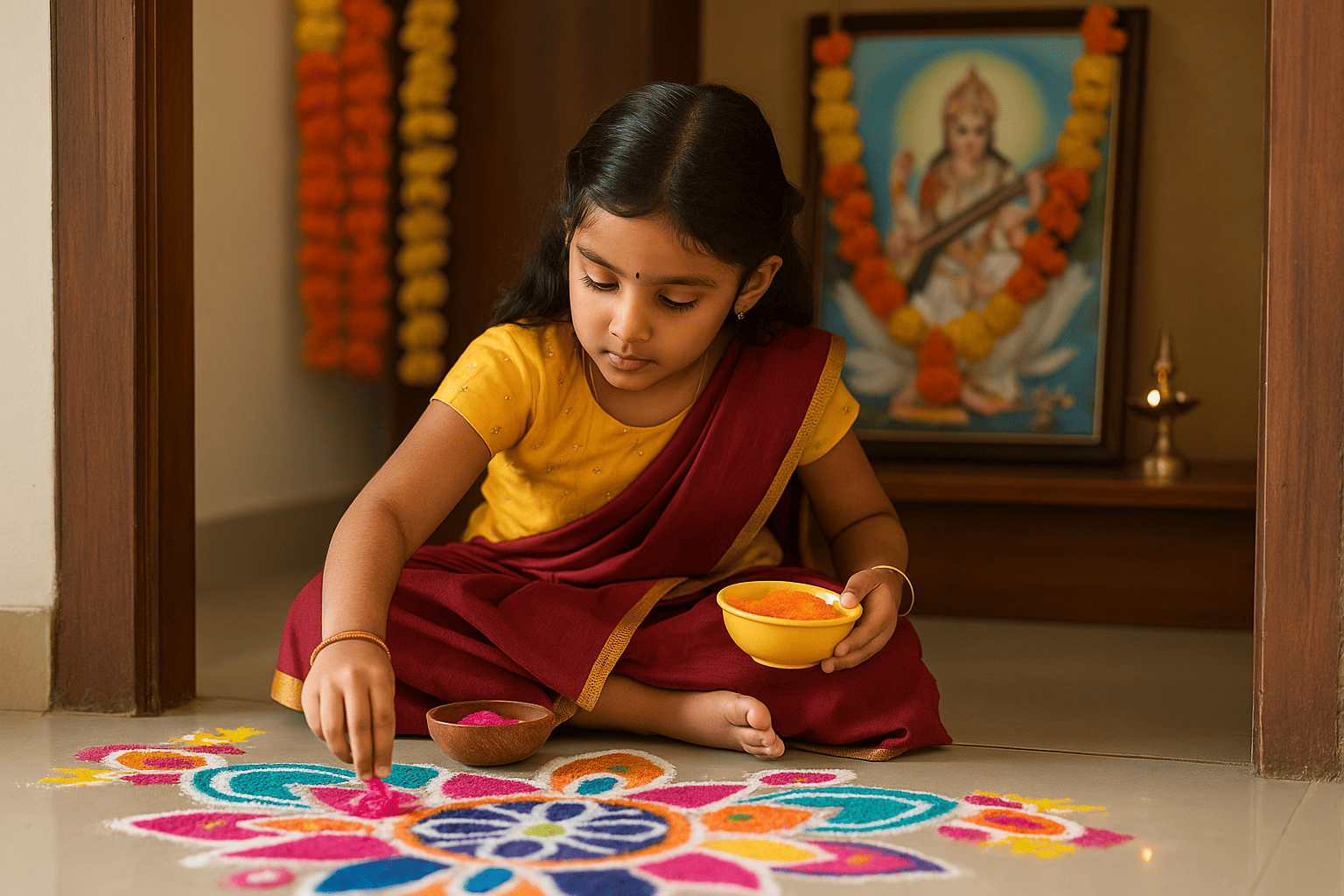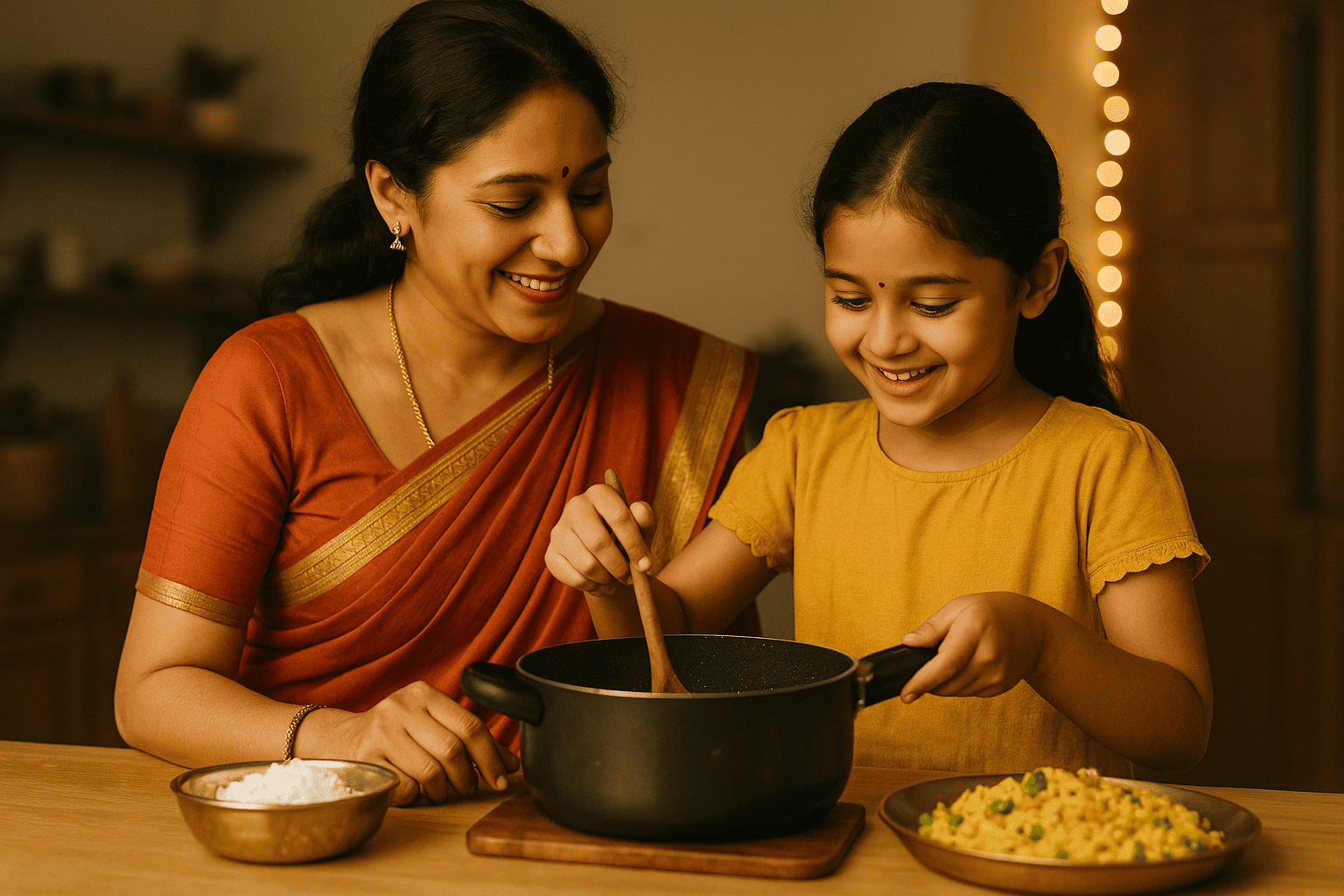

In the whirlwind of modern parenting—rushing from school runs to work deadlines, juggling screen time, activities, and endless to-do lists—it’s easy to overlook stillness. Yet, amidst all this noise, more families are turning to mindfulness as a gentle anchor. And at the heart of that movement is a question: How can children grow up feeling calm, grounded, and connected in such a fast-paced world?
The answer lies not in grand solutions, but in small, soulful practices that begin at home. For many, it starts with moments of quiet, cultural rhythm—and even play.
What Is Mindfulness for Kids, Really?
Mindfulness, at its core, is simply the act of being present. For children, this can look like:
It’s not about meditation mats or complete silence. It’s about creating space to feel, notice, and be.
Spiritual Play: A Child’s Way of Slowing Down
Berry Tots recognizes that mindfulness and culture aren’t separate—they complement each other beautifully. Many families introduce spirituality to their little ones not through rituals, but through rhythm.
Soft Ganesha plushies, for example, don’t just bring comfort—they become part of morning greetings or bedtime routines. A simple bell rung during a “thank you” moment. A battery-operated diya lit as the day begins. These gestures allow children to feel part of something gentle and sacred, without pressure or formality.
Even a short “Om” chant sung together can become a grounding force in a child’s routine.
Creating a Mindful Environment at Home
A mindful home doesn’t require special décor or silence. It starts with intention.
Here are some practical ways to introduce mindfulness in small, culturally inspired ways:
Encourage storytelling as reflection: Talk about Hanuman’s loyalty or Krishna’s calmness in tough situations. These stories help children internalize emotions and values.
The Role of Routine and Rhythm
Children thrive on routine. When mindfulness is embedded in daily rhythm, it becomes second nature.
A sample mindful routine might include:
These aren’t rituals—they’re rhythms. And children begin to rely on them like a heartbeat.
Handling Big Emotions with Little Tools
Mindfulness also helps children understand and navigate big feelings. Instead of saying “calm down,” parents can model:
With time, children learn that emotions are natural—and that they have tools to return to calm.
Cultural Comfort as Emotional Grounding
For many children of diaspora families, culture can be both a mystery and a comfort. Introducing small spiritual practices gives them a sense of rootedness.
It’s not about being religious—it’s about belonging.
A child who knows how to say “thank you” in a simple prayer… who recognizes a diya as something special… who lights incense with Ammama or listens to Paati sing a prayer at dusk… grows up feeling connected to something bigger.
That connection builds confidence, emotional strength, and resilience.
Making It Child-Led, Not Parent-Forced
The key to raising mindful children isn’t in controlling the process. It’s in inviting them in.
Instead of saying, “You have to sit still,” try:
Mindfulness becomes a conversation, not a command.
And when children are allowed to explore, they develop their own relationship with stillness—and it lasts far longer than any rule ever could.
Final Thoughts
Raising mindful children doesn’t mean raising perfect ones. It means creating a home where feelings are welcome, presence is encouraged, and culture is a source of strength.
In a world full of distraction, helping a child pause—even just for a moment—is an act of love.
Berry Tots continues to champion small, soulful tools that guide children back to themselves. Whether through plush toys, spiritual storybooks, or tiny rituals—every item is designed to bring comfort, calm, and cultural beauty into a child’s daily life.
Because mindfulness isn’t just about slowing down. It’s about showing up—for ourselves, for our children, and for the moments that matter most.







